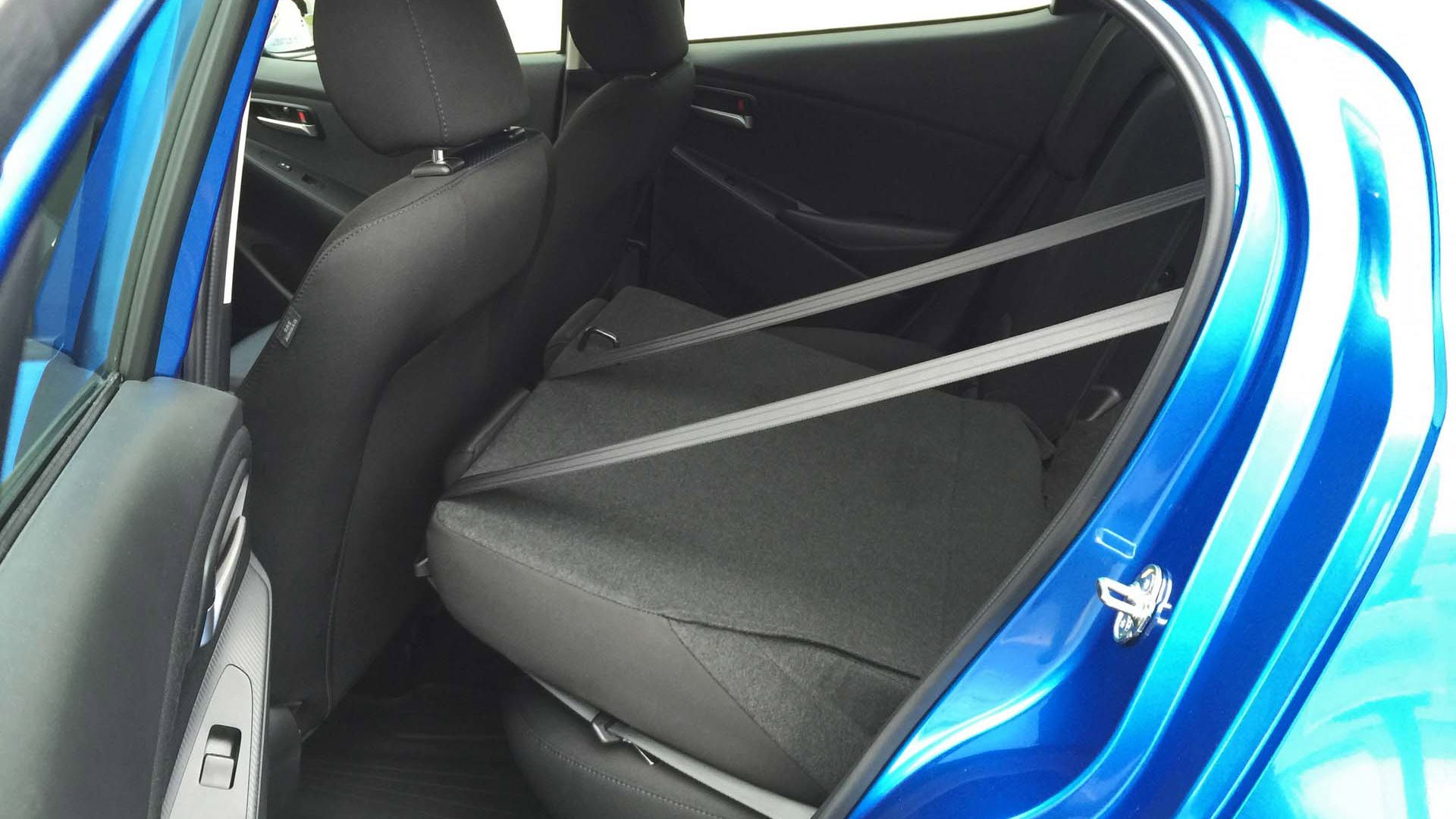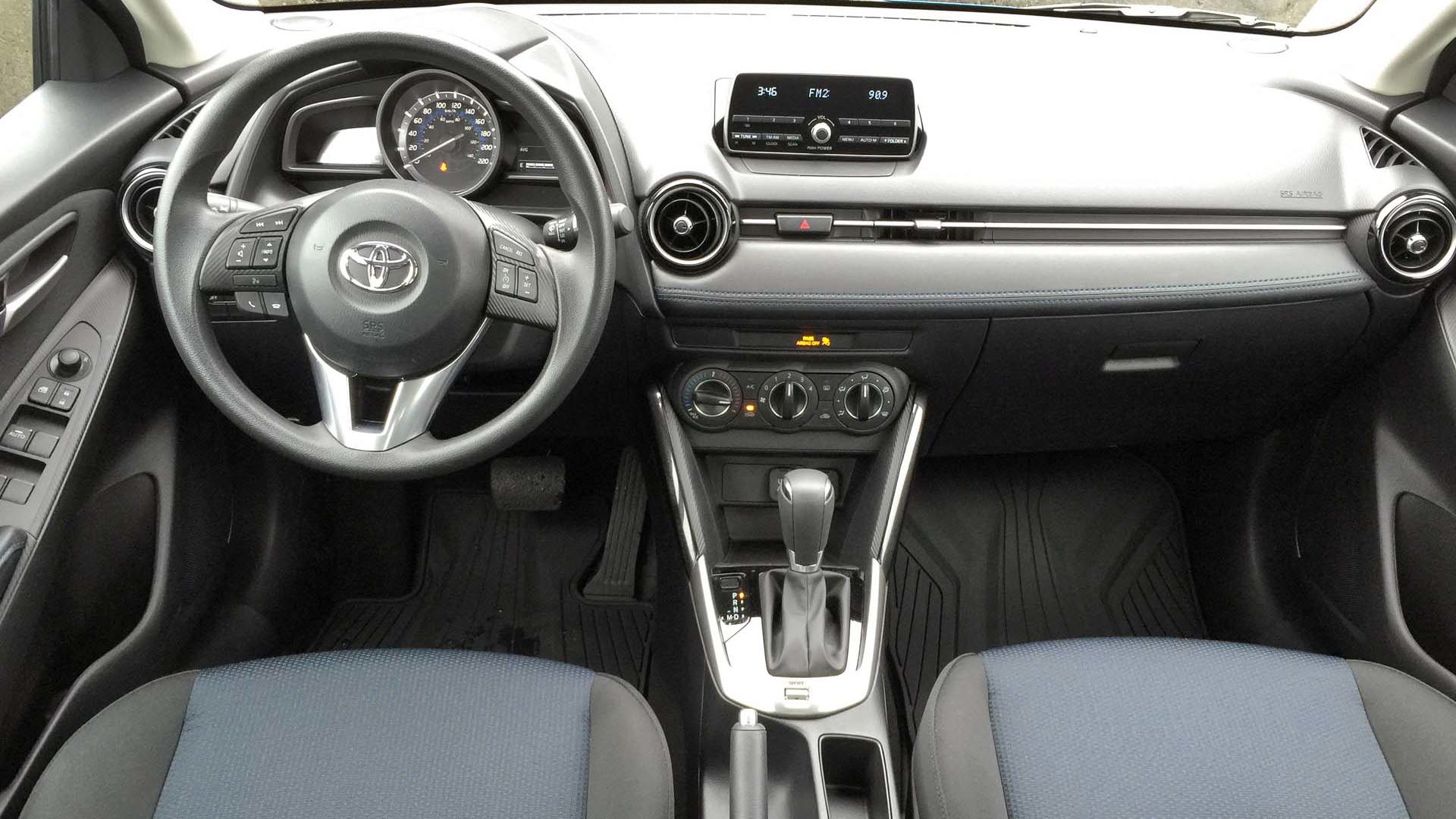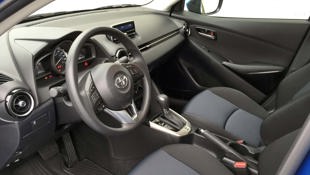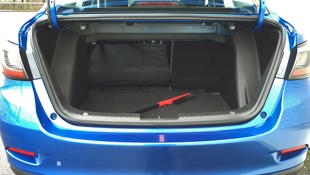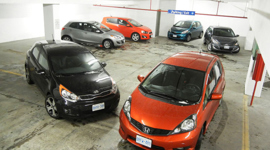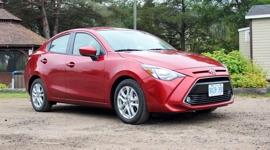 AutoTrader SCORE
AutoTrader SCORE
-
EXTERIOR STYLING5/10
-
INTERIOR6/10
-
PERFORMANCE5/10
-
COMFORT6/10
-
FUEL ECONOMY8/10
This exchange was rumoured to have occurred on Jeopardy recently:
Why would Toyota sell a Mazda in Toyota’s showrooms? And will it be as reliable and fuel efficient as a comparable Toyota sedan?
Contestant #1: I’ll take ‘Japanese Cars’ for 800 dollars, Alex…
Alex: This Japanese subcompact sedan is made in Mexico by Mazda Motor Corporation and sold in Canada, Mexico and Puerto Rico. What is it called?
Contestant #1: What is the Mazda2?
Alex: Incorrect.
Contestant #2: What is the Scion iA?
Alex: Wrong again. The correct answer is, What is the Toyota Yaris Sedan?
Contestants #1 and #2: WTF!
Okay, maybe not that last part, but when it was announced at last year’s New York Auto Show that the new 2016 Scion iA sedan was actually a restyled, rebadged Mazda2 sedan built in Mazda’s new plant in Mexico, and that the Canadian version would be badged as the 2016 Toyota Yaris sedan, Canadian and American consumers must have been wondering what’s going on. Why would Toyota sell a Mazda in Toyota’s showrooms? And will it be as reliable and fuel efficient as a comparable Toyota sedan?
The answer to the first question is mostly about economics. Profit margins on small cars are thin, especially if they’re built in high-wage countries like Japan which also have a strong currency – that was the case with the last Yaris Sedan which was built in Kariya, Japan and dropped from the Canadian line-up in 2013. Low-wage, low-tax countries like Mexico, which is also much closer to the USA and Canada, can manufacture cars much more economically. Since Mazda doesn’t sell the Mazda2 sedan in Canada and recently discontinued the Mazda2 hatchback, Toyota struck a deal with Mazda to rebadge/restyle the Mexican-built Mazda2 sedan as a Toyota Yaris sedan for the Canadian market.
Note that the current Yaris hatchback, which is built in Valenciennes, France in a Toyota plant, is a completely different car with a Toyota platform and powertrain. Since Mazda also builds a Mazda2 hatchback in Mexico, it’s not unreasonable to speculate that Toyota will replace the French-built Yaris hatchback with a rebadged Mexican-built Mazda2…
As far as reliability and fuel-efficiency are concerned, Mazdas have a good reputation for both, though it remains to be seen how good the build quality is at Mazda’s new plant in Salamanca, Mexico.
Except for its over-sized grille, the 2016 Yaris Sedan’s styling is the same as the Mazda2’s. But what about that grille? Obviously, Toyota hasn’t learned from Mazda’s experience with the second-generation 2010 Mazda3: its oversized ‘smiley’ grille had to be downsized in 2012 after a frosty reception from consumers. Still, the rest of the car – that is to say, the Mazda2 part – is quite stylish. Its curvy lines, flowing roofline and high rear deck work well together. And the overall size and proportions of the Yaris (narrow body, tall roof, flowing roofline) are quite similar to the previous Toyota-built 2012 Yaris Sedan.
The Yaris Sedan’s interior is all Mazda – except for a Toyota logo on the steering wheel. That’s a good thing because Mazda makes some of the nicest interiors in the small car category. The interior of our base model certainly didn’t look cheap. Standard are sturdy black fabric seats with blue seat inserts, a black instrument panel with blue stitching across the dash; a vinyl steering wheel with integral buttons for phone, audio, trip computer and cruise control, silver trim on the lower console and steering wheel, glossy black trim around the air vents, and grey patterned trim on the steering wheel and armrests.
The distinctive stand-up tablet-like screen in the centre of the dash is a Mazda giveaway, assuming Toyota buyers have ever looked inside a Mazda. On base models it’s a small black-and-white screen with integral volume dial and buttons for other audio functions. On Yaris Premium models, it’s a larger, 7-inch colour screen operated by a dial on the centre console which can also be operated as a touchscreen when the vehicle is stopped.
The interior of the base Yaris Sedan ($16,995 man; $18,200 auto) includes some things you might not expect for that kind of money: air conditioning, voice-activated Bluetooth telephone, height-adjustable driver’s seat, tilt and telescopic steering wheel with audio controls and cruise controls, keyless entry and pushbutton ignition, power windows, power mirrors, variable intermittent wipers and 60/40 split folding rear seatbacks.
The Yaris Sedan Premium ($20,200), which comes standard with the automatic transmission, adds the larger 7-inch display screen and Commander control dial on the console, heated front seats, rearview camera, and 2 speakers. It also adds alloy wheels and front fog lights. Navigation is a $500 option.
For a small car, the Yaris Sedan is relatively easy to get in and out. The driver’s seat has a manually operated seat height adjuster and a tilt and telescopic steering wheel making it easy for large and small drivers to find an appropriate seating position. Front and rear legroom are adequate for four adults and headroom is surprisingly generous at the rear. The narrow cabin is best suited for two adults in the rear but there is no folding centre armrest. There are three height-adjustable head restraints which slide down almost flush with the top of the rear seatbacks when not in use. That improves the driver’s rear visibility, particularly as the Yaris Sedan has a high rear deck.
All five seats have three-point lap and shoulder belts with pretensioners and force limiters, and for child seats, the outboard rear seats have seat anchors and tether points. The rear doors also have child locks.
Behind the steering wheel, the central speedometer is easy to see but the flanking tachometer and driver information screens are rather small. The right-side display shows the outside temperature, fuel gauge and trip computer values: the driver can scroll between useful info such as average and current fuel economy, range, and average speed using the Info button on the steering wheel.
Standard pushbutton Start is great because you can just leave the key in your pocket when you start the car. However, to lock and unlock the doors from the outside, you need to hold the keyfob in your hand rather than just touching a button on the door handle. In other words, you can’t leave the keyfob in your pocket all the time.
In the base Yaris, the centre screen is a bit of a reach to adjust the volume or media buttons but there is a volume button on the steering wheel. The standard 6.1-inch display (which is actually a narrow display at the top of the tablet) shows the time, media and radio station as well as other audio and bluetooth phone setup functions. Despite three attempts, I wasn’t able to pair my iPhone6 Plus phone with the standard Bluetooth telephone feature. A larger 7-inch screen in the Yaris Premium trim is controlled by a dial on the console between the seats which includes a console audio volume dial. As well, this screen becomes a touchscreen when the vehicle is stopped.
Even the base model has padded door armrests and padded door inserts but neither Yaris model has a centre armrest and storage bin. That said, there are three open storage bins in the centre console: one at the bottom of the centre stack with USB, auxiliary and 12-volt ports, a narrow bin beside the hand brake lever, and a square bin at the back of the console accessible by rear passengers. There’s also a map pocket on the back of the front passenger seat.
For a small car, the Yaris Sedan’s trunk is a spacious 382 litres. It offers a lined floor and split folding rear seatbacks released by pull-type levers inside the trunk. This prevents thieves who might break into your car from accessing the trunk. The folding seatbacks fold down on top of the rear seat cushions which creates a higher load surface than the trunk itself, so you can’t just slide long, heavy objects through the pass-through without lifting them up over the seatbacks. Under the trunk floor is a temporary spare tire and a jack.
The base Yaris, like our test car, includes Mazda’s 106 hp 1.5L four-cylinder SkyActiv engine and six-speed manual transmission, 16-inch all-season tires and steel wheels with covers, electric power steering, and front disc/rear drum brakes with ABS. Our test car had the optional six-speed automatic transmission with manual shifting capability and a Sport mode. This transmission is standard on the Yaris Premium.
Acceleration off the line is rather slow in normal mode, and the automatic transmission seems geared for maximum fuel economy. NRCan’s official fuel economy numbers for the Yaris Sedan with the manual transmission are 7.6/5.7/6.7 city/highway/combined. With the automatic transmission it’s 7.2/5.6/6.4. But my fuel economy display was showing an average of 7.2 L/100 km after 2,000 km on the odometer.
For faster acceleration, you can press the Sport button behind the shift lever; the transmission shifts more aggressively providing better acceleration but with more engine noise and worse fuel consumption. Or you can shift manually by slapping the shift lever over to the left and pushing it forwards to shift down and backwards to shift up. But unless you’re in a hurry, leaving it in Normal mode is fine for day-to-day urban/suburban driving. The engine works hard when accelerating onto the freeway, but once up to speed, the engine is relaxed, turning over just 2,000 rpm at a steady 100 km/h.
Around town, the Yaris Sedan is a nimble handler that’s easy to park because of its small size. However, visibility to the rear is an issue: the rear deck is high and there is no rearview camera available on the base model. As well, a blind spot warning system is not offered in the Yaris.
The Yaris Sedan has a decent turning circle and adequately responsive (electric) power steering, but the suspension is sensitive to small road imperfections. That makes the ride uncomfortable unless you’re driving on perfectly smooth pavement. Be sure to test this car over a variety of roads to get a feeling for the ride.
My car was equipped with Toyo Observe GSi-5 185/60R-16-inch winter tires. The week that I drove the car, the weather was wet and cold, about five degrees Celsius. These tires would spin when accelerating quickly, were skittish in the wet, and offered rather feeble grip when cornering. I wouldn’t recommend them.
There’s peace of mind in knowing that the Yaris Sedan comes standard with many accident-avoidance safety features: these include electronic stability control, traction control, anti-lock brakes, electronic brake force distribution, emergency brake assist, and a brake override system.
Small and manoeuvrable, the new subcompact Toyota Yaris Sedan makes sense for those who live in or commute to the city. Despite its higher price-tag, I’d recommend the Yaris Premium because of its standard rearview camera, heated front seats, and superior centre screen and console controller. Still, with an MSRP of $20,200, the Yaris Sedan Premium is not much cheaper than a similarly equipped Toyota Corolla. Which one would you buy?
| Warranty: 3 years/60,000 km; 5 years/100,000 km powertrain; 5 years/unlimited distance corrosion perforation; 3 years/60,000 km roadside assistance Competitors: |
| Model Tested | 2016 Toyota Yaris Sedan, six-speed automatic |
|---|---|
| Base Price | $18,200 |
| A/C Tax | $100 |
| Destination Fee | $1,535 |
| Price as Tested | $19,835 |
|
Optional Equipment
None
|
|











